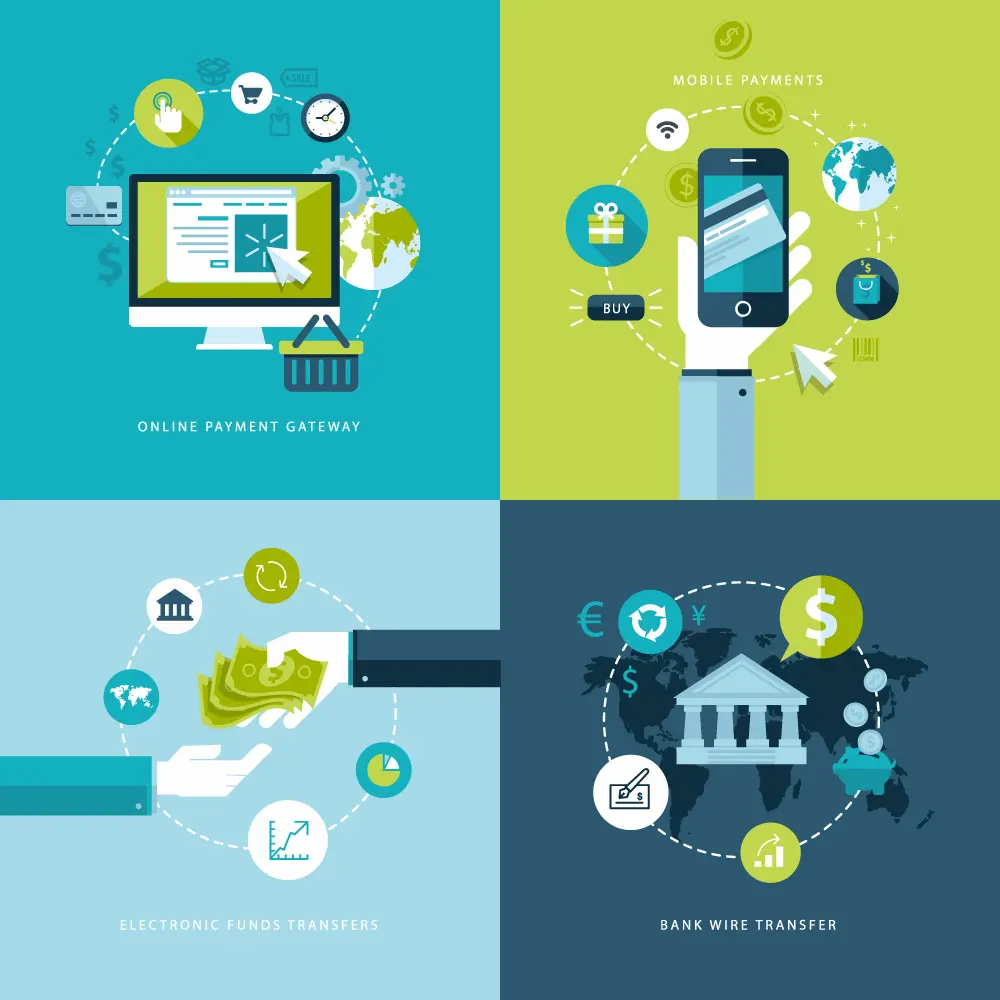What Is a Point of Sale? Your Complete Guide

Did you know that the market for point of sale (POS) software is expected to grow to $18.1 billion by 2027, according to forecasts?
So, precisely what is a point of sale? Today, every business, large or small, is incomplete without a point of sale system. A well-designed point of sale system will help you operate your business more smoothly, regardless of if you sell online, person to person, or both. It does this by centralizing all of your sales, business functions, and marketing campaigns in one location.
Running a business frequently entails taking on a variety of tasks. These tasks range from sales, inventory, and marketing to preparing monthly sales reports, among other things.
Let’s look at how a POS can assist you in running your business more effectively.
A Brief History of the Point of Sale System
The cash register, invented in 1879 by saloon owner James Ritty of Ohio, was the first point-of-sale system. As a result, users were capable of recording transactions without making any mistakes. This allowed for more accurate bookkeeping and better capital management due to the cash register.
The National Cash Register Corporation (NCR) purchased Ritty’s invention in 1884.
In August 1973, IBM introduced the POS store systems. These were essentially a mainframe computer as a store controller capable of controlling up to 128 IBM point of sale registers. This platform was the first commercial application of the below, all at the same time:
· Client-server architecture
· Peer-to-peer communications
· Simultaneous backup via a local area network (LAN)
· Remote activation
Gene Mosher, who owned a deli in New York City, invented the first visual touchscreen interface in 1986. Mosher’s touchscreen POS system, which made use of another recent technology, the internet, allowed him to send and modify orders with only a few clicks of his finger on the screen. As a result, the service was significantly improved in terms of speed and efficiency. In 1990, Microsoft released the first commercialized POS client for restaurants, based on Mosher’s idea. This system became the new norm for restaurateurs, serving as both a financial and client interaction database.
The availability of the resources listed below aided in the creation of highly flexible and highly functioning POS systems:
· Local processor power
· Local storage of data
· Networking capabilities
· Visual user interface Today, many point-of-sale (POS) programs are being continuously developed. Particularly across operating systems such as Unix and windows.

What Is a Point of Sale?
A point of sale, also known as a point of purchase, refers to the ‘point’ at which a consumer purchases and pays for goods or services. A point of sale is also sometimes referred to as the cash register.
Each time a customer purchases a product or service, they essentially execute a point-of-the-sale transaction. This is the point at which you have officially completed a purchase. You generate a printed or digital receipt and then ship or hand the goods to your client.
In the past, as discussed earlier, the term POS system referred to the cash register of a store. However, modern point-of-sale systems are digital, allowing you to check out a customer wherever you are in the world.
Put another way, a point of sale system determines the price of the goods, including any applicable sales tax. It then changes your inventory count to reflect one less item on your stock control list. Advanced POS systems, on the other hand, go far beyond this, serving as the nerve center of a company, handling a wide range of critical functions such as:
· Sale of goods or services
· Updating of inventory
· Customer management
· Generation of reports
· Adjusts pricing
These modern POS systems can do the above functions and so much more. Keep in mind that there are many different POS systems. Understanding a POS system’s hardware and software components and its capabilities will help in making better purchasing decisions to meet your company’s specific requirements.
What Is the Process of Using a POS System?
A POS system is made up of hardware and software. It automatically syncs and updates, and tracks all of your sales, inventory, payments, and other data. Whether you sell in-person, online, or both, it does this.
Typical hardware features are as follows:
· A Cash register
· A POS terminal which could be a monitor, android phone, a mobile app, or an iPad
· A barcode scanner
· A card reader for banking cards
· A cash drawer
· A printer
POS software maintains track of all of your transactions in one place. In addition, the POS system you use is customizable with added functions for different businesses.
Together, the hardware and software make a potent tool that allows your company to conduct daily processes more efficiently. This saves you time and provides vital sales and marketing information.

What Key Features to Look For in a POS System
When choosing a POS system for your business, it’s critical to consider the capabilities and features of the system’s software. A list of some significant standard functions included in a POS system might help you narrow down your search based on your requirements and specifications. Let’s look at the most common functions:
Processing Payments
One of the POS system’s primary functions is to provide payment processing. For example, when a client makes a purchase, the point-of-sale system processes the transaction.
POS system may accept a variety of payment methods, such as:
· Cash payments
· Secure online payments through your eCommerce website
· Magstripe credit cards or cards that you swipe
· Chip credit cards
· Contactless payments such as Google Pay, Pay Pal or Apple Pay
· Card-not-present transactions, which occur when you must manually enter a customer’s card information into your POS system
All the above and more are programmable for acceptable payment into your POS system.
Data Management
Every time you complete a transaction at your retail store, your POS system records the data. Once a consumer has been checked out, the information from that transaction is fed into numerous categories, including stock control, sales, goods, client, and staff.
POS Stock Control Data
POS systems will automatically update to reflect how many items you have left and where they’re stored when you:
· Get delivery of new stock
· Sell stock
· Return stock
· Exchange a product
Inventory is the foundation of any retail operation. And when you run both a physical and online store, it’s even more important to keep inventory levels accurate. With correct inventory levels that alter automatically as sales occur online or in-store, you can minimize stockouts and assure customers of product availability.
POS Sales Data
Sales data provides macro and micro-level information. POS sales data reveals your gross and net sales, as well as the total number of units sold over time. Micro-level sales data includes:
· Average order value
· Products per order
· Daily net sales
Sales data help you run a better company. For example, it tells you when your peak sales periods are and how well your staff converts foot traffic into sales.
POS Services and Product Data
Unlike sales data, product data reveals your top products. It does this through recording net sales, best sellers by the number of units sold, and the gross margin of each item or service you sell.
POS Consumer Data
Customer data tells you the length of time someone has been a customer, how frequently they have purchased from you, how much money they have spent with you, and which specific products they have purchased.
Stock Control Management
One of the most significant features of a POS system is to keep track of all your products across all sales channels, so you know when to order specific items. Basically, to control your stock levels.
Management Reports
Running reports is an essential feature because it provides a quick glimpse of how much you’re selling and earning. This, in turn, allows you to make informed business decisions. You should also be able to automatically import or link these management reports into your accounting software.
Customer Information and Marketing
A point of sale system should include a client relationship management function to keep track of all your customer information. The system should allow you to keep track of your customers’ purchase history and keep customer information such as:
· Their names
· Their ages
· Their birthdays
· Their phone numbers
· Their emails
Keeping track of your customers’ purchases might assist you in developing more tailored marketing campaigns. Systems with more advanced capabilities can even incorporate built-in loyalty schemes.

Staff Reporting & Management
Employee management software allows you to track when your team is working and how well they are doing. Your POS system should allow you to:
· Add new staff
· Create and amend work schedules
· Track weekly and overtime hours
· Evaluate performance
This data is used to help you create sales goals and inform your HR to get coaching for that employee, if needed, for example. The POS system can also be used to clock in and out members of your team, and certain types of software allow you to provide rights so that employees can access specific duties.
Mobile and Cloud POS systems
A cloud-based point-of-sale system stores information on a cloud storage server.
Cloud-based POS systems do not typically store much data on your terminal device. Instead, you keep all the information in the cloud. Thereafter, you can sync it across different terminals, allowing for greater efficiency.
One significant benefit of cloud-based software is that it removes the need for expensive on-site servers. In addition, cloud software is often delivered in the form of an application for mobile devices such as smartphones, iPads, and Android tablets.

Is Every Business’s POS System the Same?
The Point of Sale software can be obtained in two ways. You can purchase a membership to an existing solution, or you can order a custom fit POS from scratch to fit your business needs. In the first case, we’re talking about an off-the-shelf POS. In the second, we’re talking about a Customized POS such as for parks and recreational grounds.
Tailoring your POS system to fit your business will provide you and your customers with a vast number of specific benefits that you may not have considered before.
These custom functions include when and how varied processes are carried out and will help set your priorities following the specific needs of your industry. Further customizing options come from the specialized dynamics that make up your own company.
Let’s take an example of a company that offers sports facilities. You could customize your POS software to:
Schedule League Games You could request to add a League Scheduler Tool to your POS system. With that tool, you can arrange a whole season’s worth of league games with just one click of a button. You can easily make modifications in the middle of a seasonal league. When you publish the season schedule, you can immediately notify players of the changes.
Rental Times of Grounds
Add a calendar tool to make it easier to keep track of the time needed to rent out the grounds.
For example, team bookings for ground time pop up in the calendar. It also gives you a place to put in all the information you need to rent the ground. In addition, you can add extra services when you make a reservation, such as changing room facilities. You can even draw up a contract with the terms and conditions and have the contract signed electronically.
Quality Performance Starts With a POS Attitude!
In addition to saving you time, a point of sale system can provide you with the potential to expand your business.
Now that you know more about ‘what is a point of sale’ we hope it has improved your understanding of them. Now, you’re equipped to pick the best one for your company, regardless of what you sell or where you do business. Are you looking for a sports management POS system? Then contact us, and request a demo. We simplify facility management!


